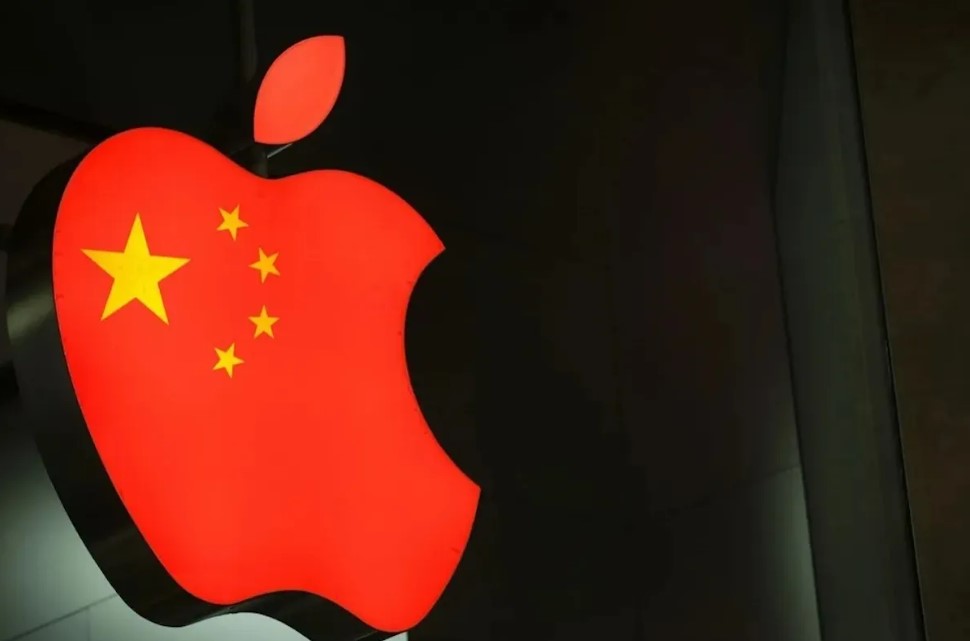Recently, Apple announced the establishment of a new R&D center in Shen. Apple's new R&D center in Shenzhen is the company's latest move to counter Huawei's resurgence and strengthen its position in the world's largest smartphone market. This is Apple's fifth product development center in China. It also dispelled speculation that Apple might exit China and turn to India. In fact, Apple is only using India as one of its important markets and production bases, while continuing to strengthen its presence in China.
Greater China is Apple's third-largest market after the Americas and Europe, but sales in the region have declined recently. Greater China accounted for 17.5% of Apple's total sales in the nine months ended June 29, 2024, down from 19.6% in the same period last year. Sales in Greater China decreased by 9.7 percent year-on-year, while overall sales increased by 0.8 percent. In the third quarter, Apple reported a 6.5% year-over-year decline in sales in Greater China, while total sales increased by 4.9%.
According to CINNO Research, a Chinese consulting firm, Huawei's mobile phone sales in China surpassed Apple's for the first time in August this year, after 46 months. According to statistics from Canalys, a Singapore market research agency, Huawei also surpassed Apple in sales in the first quarter of 2024. Huawei and Apple also competed fiercely in the high-end smartphone market during the Singles' Day shopping festival, with all the top 10 high-end smartphones sold on JD.com's website coming from these two companies. The list includes several popular models such as the iPhone 15 Pro Max, Huawei Mate 60 Pro, and more.
Against this backdrop, Apple announced on October 10 the establishment of a new "Advanced Application R&D Center" in the Shenzhen-Hong Kong Science and Technology Innovation Cooperation Zone in the Shenzhen Loop. The center will serve as Apple's main applied research laboratory in the Guangdong-Hong Kong-Macao Greater Bay Area, replacing the old facility established in 2016. In addition, Apple has other R&D centers in Beijing, Shanghai, and Suzhou.

Figure: Why Apple is not "decoupling" from China (Source: Asiatimes)
According to Shenzhen Daily, "the lab will cover Apple's business operations in Greater China, including the originally planned R&D business in the Asia-Pacific region, which will further consolidate Shenzhen's core position in Apple's intelligent manufacturing and supply chain." As early as 2016, Apple CEO Tim · Cook said: "We realize that the technical level of the Shenzhen factory is gradually leading the rest of the world." "This trend is becoming more pronounced today. The new center will employ more than 1,000 people and will be responsible for hardware development, smart manufacturing and testing of iPhones, iPads and other products, as well as working with local suppliers to further enhance the supply chain.
Li Yong, a senior researcher at the China Association of International Trade, was quoted by the Global Times as saying: "This is a reasonable decision made by Apple in a complex global political and economic environment." "For Apple, maintaining its position in the lucrative Chinese market is not only reasonable, but may also be necessary. The Global Times also pointed out: "Apple has strengthened its presence in the Chinese market despite the United States government's continued pursuit of 'decoupling' from China, increasing sanctions, and making baseless accusations and provocations against Chinese companies."
The article concludes by mentioning that Apple's chief operating officer, Jeff · Williams, visited China in July, just as the third plenary session of the Central Committee of the Communist Party of China passed a resolution emphasizing "opening up" as "a distinctive feature of China's modernization." Williams told Chinese media that more than 70 of Apple's suppliers have factories in Guangdong province alone, highlighting the special significance of the Shenzhen-centered Guangdong region in Apple's supply chain. Last fiscal year, 98 percent of Apple's direct spending on materials, manufacturing and assembly came from 187 suppliers, 157 of which have branches in China and 56 are owned by Chinese companies. In comparison, India has only 14 Apple suppliers. Despite India's rapid growth in recent years, it still accounts for less than 5% of Apple's total revenue.






